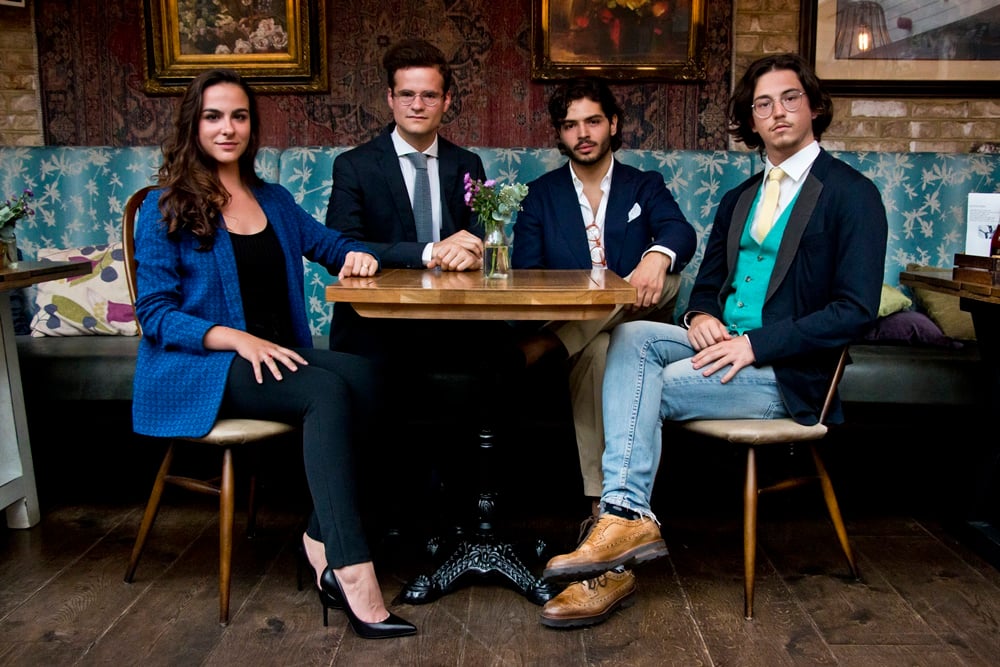
Art-world insiders frequently caution collectors against treating art purely as an asset class. But it seems that every few months, another start-up forms to do exactly that. First, there was ArtRank. Next, ARTSTAQ. Now, the London-based startup Feral Horses has joined the fray.
The twist? This one is part art-rental scheme, part art stock market.
Founded by a small group of young entrepreneurs who met at university, Feral Horses offers an online marketplace where individuals can purchase “shares” of select artworks.
Here’s how it works. Artists upload their work on the platform and agree to a defined selling period—likened to an IPO—and a threshold (a minimum amount of shares that have to be sold in order to validate the sale). Once the threshold is met and the sale goes through, investors can begin trading their shares on a live platform.
Meanwhile, Feral Horses sends the works out on loan to businesses and hotels in exchange for money. Those rental fees will be returned to the “shareholders” in the form of “dividends.”
Feral Horses has been active for about six weeks and raised £121,000 through the sale of 17 works by 11 artists based throughout Europe, according to CEO Francesco Bellanca. The participating artists, including Simone Fugazzotto, Lèo Caillard, and JAGO, were selected by the company’s creative director with input from a group of curatorial advisors.
He notes that the company prioritizes artists who “have already interacted with institutions,” though few have much name recognition.
The artworks in Feral Horses’ (ahem) stable range in price between £3,000–40,000. The monthly rental fees hover between one and two percent of the value of the artwork, although the company hopes that value will increase over time as the works gain exposure.
Courtesy Feral Horses
The start-up is the brainchild of three friends who met in college: Bellanca, CMO Lise Arlot, and CFO Christian De Martin. (They were later joined by Romano Oliveri as art director.) Bellanca says the partners—who have chosen the somewhat mystifying label “whippersnappers” to describe themselves on their website—have backgrounds largely in business and marketing. Bellanca himself recently completed a master’s degree at King’s College in “Big Data in Culture and Society.”
Why would artists want to participate in Feral Horses’ scheme? According to the company’s website, when a work is “sold” on the exchange, artists receive 80 percent of the proceeds, as opposed to the industry standard of 50 percent.
For an investor, the potential payoff is minimal (how much money can actually be made from renting modestly priced artworks by relatively unknown artists?). But the risk is also relatively low. Shares of a work are traded in increments as small as .1 percent—so one share of a £4,000 artwork, for example, can be bought for £4. (To allow for a large number of investors to participate, no individual can buy more than 20 percent of a single work.)
David Aiu Servan- Schrieiber, Stintino. Courtesy of the artist.
Feral Horses is aiming to position itself as a gateway drug for novice collectors eager to dip their toes into the art market. Why live with and enjoy a work when you can own a portion of it and have it tour office lobbies?
“It’s not really the most gentle way to interact with art, but it is something to start the conversation,” Bellanca says. “At least they can make money off it and probably are going to be able to start to understand the reason behind it.”
Is the arrival of Feral Horses an indication that we’ve reached peak art-as-asset? Maybe. The company assures would-be investors that they will, in fact, be allowed to see the physical artworks they partially own. In addition to planning a series of exhibitions in London, the founders promise that shareholders can always visit the works in storage.